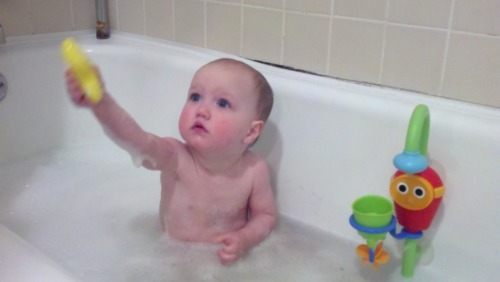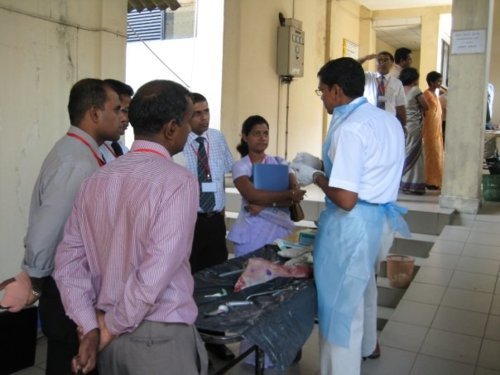An ambulance recently brought a boy with a complicated past history into the ER at the community hospital where I spend some of my time. I heard a quick summary as I walked down the hall and called the helicopter to come get him before I even walked into the room.
All doctors want to believe that they have the power to make a difference. Smart ones know when they can’t. I gave him some medicine to make him more comfortable. I stroked the hair back away from his eyes, which were squeezed shut because of the pain. I tried to reassure his mother that the agony he was experiencing could be from even a mild worsening of his underlying condition and that, as awful as this was for him, she should try to take a few deep breaths. Then I got him out of there as fast as I could.
It was a snap decision but it was not one that I made lightly. I had also spoken to the ICU downtown to see if their Transport Team was immediately available. They weren’t. In any case they can go no faster than a normal ambulance so it wasn’t worth the wait. What he needed was a test and a procedure that I couldn’t provide and so he had to go.
In the wake of this incident, I have begun to think more carefully about how patients get from point A to B. All ERs receive their share of ambulances carrying essentially well human beings who found it easier to dial 911 than to wait for the bus or find a friend to drive them. They receive their fair share of human beings who find it easier to visit the ER than to wait for a doctor’s appointment as well. Strictly speaking this is not what our emergency services were designed for. But is it wrong?
Not long ago I saw a toddler who had choked while in the bath. He was fond of pushing himself around on his stomach with his face partially submerged in the one or two inches of water in the tub, blowing bubbles along the way. On this particular evening he breathed in instead of out. He sputtered. He grew stiff. His mother, only an arm’s reach away, grabbed him and smacked him across the back. Then she called 911.

In some ways it is a testament to her parenting that this was the most frightening incident he had experienced in the eighteen months of his short life. Emmaline herself has long had a contentious relationship with her own windpipe. From the moment she could hold a banana she has had one in her hand. She takes larger bites than she can handle all at once and occasionally has to spit out a dollop of masticated mush onto my waiting hand. And she has choked – not very many times, but every now and again her face turns red and she coughs. I pat her back. She giggles and looks at me mischievously and then she coughs again. She has made a game of it and while I have friends who routinely tell me that I’m crazy for letting her feed herself, she has never once turned blue.

By the time I saw this patient, scrubbed clean and smelling of sweet baby soap, he was playing with a truck. The ambulance ride was entirely unnecessary. He did not even get an x-ray before I sent him on his way. Dad said almost nothing during the entire visit, but from his look of calm amusement I could tell that he knew what it was my job to convince his wife of – that their son was entirely okay. I kept them for exactly as long as the boy’s mother needed in order to still her own heart from racing, to slowly realize that it was not necessary to keep watch next to his crib all night, and then I let them go.
If mom had not had 911 so easily accessible, would I have seen them on that night? I don’t think so. If ambulances didn’t exist and mom had been forced to wait longer than the ten seconds in which she picked up her phone to make the decision to come or not – if she had talked to her husband and gotten a bag together and put the baby’s pajamas on and then gone to the closet for his coat – she likely would have seen by then that he was one hundred percent fine. She was a smart woman. She was just scared. And when you are scared, watching an EMT strap your baby into the back of an ambulance does nothing to help your nerves. It only makes matters worse.
Still, if there had been something wrong - if the baby was blue and not breathing then our amazing first responders would have been the ones there to save his life. So as much as I sometimes shake my head at the things people call 911 for – the stubbed toes, the single episode of vomiting in a child whose classmates are all doing the same – I am so very grateful to live in a community where parents do not have to worry. They pick up the phone and help appears.
A couple of years ago I attended a conference on trauma medicine while in Colombo, Sri Lanka. I was in the country visiting a friend and just happened to have the opportunity to go. The lectures had been prepared by a group of doctors from Columbia (our Columbia, in New York) and the attendees were primarily local surgeons or other emergency personnel. One of the speakers – a thirty-something white man who was sweating into his wrinkled suit – was reviewing the guidelines for administering mannitol when the discussion got particularly interesting. Mannitol is a drug given to those with head injuries to reduce intracranial swelling while they are transported to a neurosurgeon who can fix the bleeding or move the broken piece of skull.

“How often can you give it?” a tall man in the second or third row asked.
The lecturer reinforced his point, “It really should be given only as a temporizing measure until the patient can be transported to more definitive care.”
Another hand shot up.
“So we should drill burr holes to relieve the pressure?” someone else asked.
The visitor looked taken aback.
“No one should be drilling holes in a patient’s skull unless they have been specifically trained to do so,” he replied.
“Then how often can we give mannitol?” the tall man asked again.
Perhaps the speaker had not yet travelled outside the city. If he had, he would understand that traffic moves at a crawl since there are so many pedestrians and animals wandering along the narrow thoroughfares. The trains are not much faster and there are no real airports and no squadron of helicopters to fly patients from the remote areas - where they, say, fall off of the motorcycle they have been riding on with their entire family (husband, wife, infants and children), none of whom are wearing a helmet - and the hospital where there is a neurosurgeon who might be able to help. One conference attendee then admitted it took twenty-two hours for one of his patients to make a journey that in the U.S. would have taken thirty minutes at most. In the end, there was no good answer for what the treating surgeon should try to do.

So I do feel lucky. I feel enormously grateful. But at the same time, if any of you stub your toe when you stand up to get coffee after reading this post, please take ibuprofen and ice it. The EMTs have more important things to do.

No comments:
Post a Comment